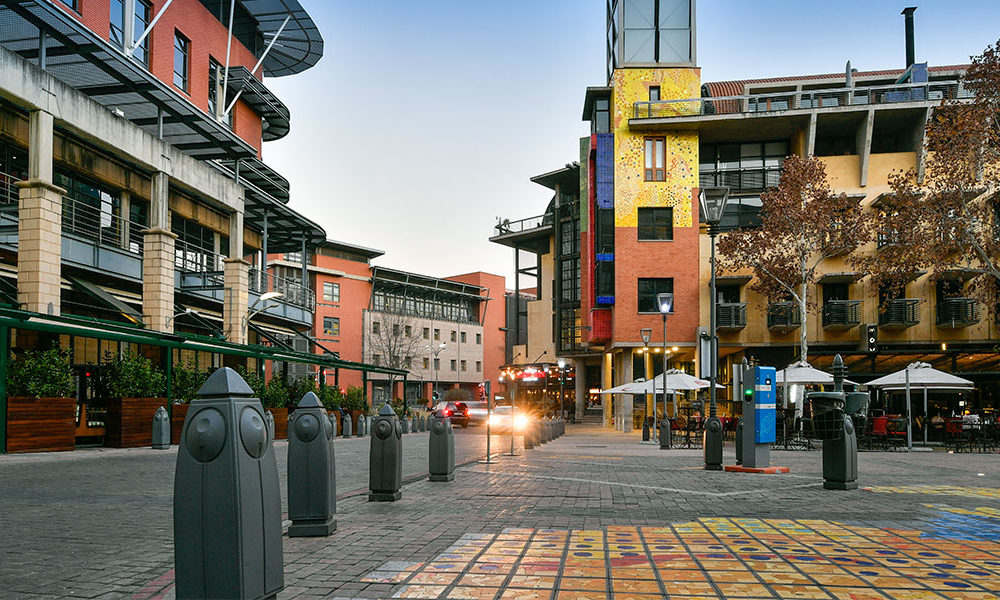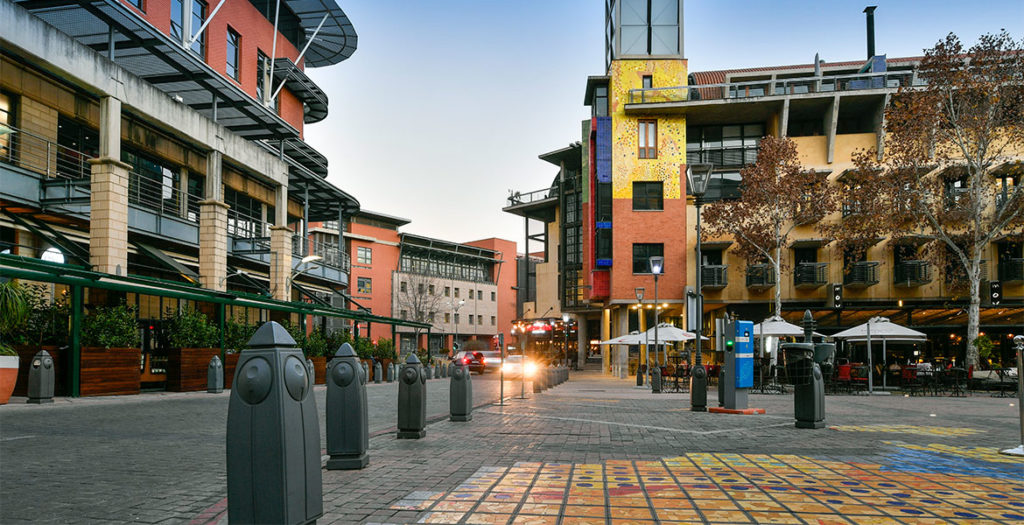Have you noticed that certain colours make you feel calm and relaxed, while others make you feel more energised? Or that you attribute certain meanings or feelings to colours, like red and love, green and renewal or yellow and happiness? The belief that colour can affect mood and behaviour is not a new one, and the modern-day term for this concept is colour psychology.
But how does this relate to cities and urban design? Well, there have been a few interesting experiments on how colour in cities impacts residents.
Colour Your City: Durban and Berlin
The Centre for Conscious Design shares a case study on their website which outlines two projects undertaken by London-based agency Colour Your City and various partners. In 2018 they produced interactive art installations in Durban and Berlin, where they engaged with the public, through a series of questions, to explore “public perception and feelings towards urban colour.”
And that response, according to the case study, was “overwhelmingly positive in relation to colour in the urban environment, with a lot of pleasurable emotional value (joy, aliveness, expression, inspiration) and clear indicators of comfort (contentment and enjoyment) associated with colourful urban settings.”
Happy City: Vancouver
In a similar experiment, Happy City, an urban planning, design and architecture consultancy in Vancouver, Canada, tried to “measure the effect that colourful or lush interventions have on people’s wellbeing.” They particularly wanted to understand “how urban design influences people’s sense of trust in strangers, their feelings of happiness and their sense of belonging.”
To do this, Happy City took participants to three everyday areas, “a residential laneway, an intersection and a manicured green space” and then took them to similar areas where “colourful or lush interventions” had been implemented.
The consultancy gauged their response to both types of areas and found that, among other things, “Participants who experienced the interventions expressed a greater sense of happiness than they did at the standard sites. They felt more care for these places.”
But what does the science say?
As it turns out, there isn’t a wealth of research into the area of colour psychology. In an article for Verywell Mind, author Kendra Cherry explains that, “Much of the evidence in this emerging area is anecdotal at best, but researchers and experts have made a few important discoveries and observations about the psychology of color and the effect it has on moods, feelings, and behaviors.” She also points out that many psychologists are sceptical of colour psychology and that colours can have different meanings in different cultures. Ultimately, the article concludes that more research into this area is needed.
Bringing colour into Melrose Arch
While the science may not be definitive yet, we believe there’s value in bringing colour into urban spaces. Johannesburg is one of the greenest cities in the world, and through design elements like green spaces, public art and colourful walls, we want Melrose Arch to reflect its vibrant character and positively impact everyone who visits, works or lives in the precinct.
Buying an apartment at One on Whiteley gives you access to all the benefits of Melrose Arch, so enquire today before they’re all sold.



